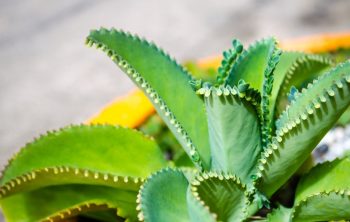Polka dot plant leggy is one common issue faced when growing this lovely plant. So, if you’re experiencing this issue and you’re wondering how to fix it then you’ve come to the right place because we will explore everything about polka dot plant turning leggy.
The Polka dot plant is one charming plant that is loved because of its radiant colors. The foliage of this lovely plant is characterized by this specked polka-dotted look. The variegated color can come in pink, red, or white marked with splashes of dark green.
However, when this cheerful plant starts to turn leggy, it tends to spoil its beauty so this causes some concern. Polka dot plant leggy troubleshooting will be explored in this post so let’s delve in.
Polka Dot Plant Leggy – What Does This Situation Mean?
Polka dot plant leggy is caused by the stem of your plant growing longer than it should be. Therefore, the plant becomes outstretched and this kind of situation can cause the plant to fall over and grow fewer leaves. This creates an untidy and unappealing look for a polka-dot plant.
Plants such as polka dot tend to become leggier as they grow old. But take note that this isn’t because the plant is unhappy, but the aesthetic beauty is reduced.
Let’s dive in further and see the reason why the polka dot plant turns leggy.
Reasons: Polka Dot Plant Turning Leggy and Possible Solutions
The cheerful polka dot plant can grow leggy due to a few different reasons:
1. Poor lighting
One major reason for polka dot plant turning leggy is poor lighting or lack of light. Once the lighting system is poor, the stem will begin to stretch trying to reach out to any light. Polka dot plant leggy results in a weak and thin stem and it usually contains lesser leaves.
Lack of light reduces the ability of the plant to photosynthesize. This causes the plant to save some energy and reach the closest source of light by quickly producing emergency growth.
Solution: Provide bright indirect light to all parts of polka dot plants that are indoors. We recommend you position your plant near a window that will provide morning sun to the plant. However, if there isn’t a bright spot to put your polka dot plant, an artificial grow light can do the job fine.
2. Over-fertilization
Excess fertilization of the polka dot plant can result in the production of fast growth but limp and weak growth. This also results in a yellowy-green color. Then it may be accompanied by the leaves on the base of the plant becoming yellow, turning brown, and then dying off.
Even though the polka plant really needs feeding just to maintain its outstanding and luscious foliage; excess feeding can cause different growth issues. This can be more serious if the nitrogen content is on the high side. It can cause different growth issues such as weak stem and leggy growth.
Liqui-Dirt Nano Powder All-Purpose Organic Complete Plant Food
Nitrogen does indeed help polka dot plants produce new cell growth, especially leaf and stem so it is crucial for the survival of the plant. However, when it gets too much, it can cause your plant to grow rapidly causing a leggy appearance.
Solution: Make sure you provide the right amount of fertilization to your polka dot plant. Ideally, we recommend you fertilize your polka dot plant once a month during its growing season (usually summer or spring). Then fertilization should be ceased during winter. These plants are fast growers so you can do diluted houseplant fertilization. A little compost addition can be added just to boost its nutrient.
3. Unsuitable pot size
Not using the right size of pot can cause the polka dot plant to turn leggy. If the pot size is too big, you may end up having a leggy plant. The plant will grow rapidly just to fill up the available space in the container. So, the bigger the space, the leggier your polka-dot plant gets.
Solution: If you have an oversized issue, it’s best to repot the plant into a smaller pot. Then after you must have repotted into the appropriate pot size, you will further need to prune your plant as it grows.
4. Watering
The watering requirement of polka dots needs to be met. If you over-water or under-water the polka dot plant, it can result in the leggy plant. The
Solution: Water the polka dot plant only when the top

Click here to get info about:
5. Age
Polka dot plants are inclined to grow taller and leggier as they grow old or mature. If you leave the plant to grow naturally, it will eventually produce flower spikes. Although flowering may seem interesting, we recommend you don’t allow the plant to flower because it can die off once it has finished flowering. The blooms of polka dots aren’t as charming as the foliage.
Solution: Cultivate the act of pruning your polka dot regularly to prevent or hold them off from flowering.
6. Temperature – Polka dot plant leggy
Because the polka dot originates from warm environments such as tropical areas, it likes a warm environment. Again, polka dots are fast growers; especially if you provide them with the right growing conditions. We don’t want fast growth because this can cause leggy growth.
Solution: Adjusting the temperature by reducing it to slow down the growth helps prevent leggy growth. This won’t affect the growing plant. So, keep the plant at room temperature between 65 to 70 degrees.
Polka Dot Plant Leaves Falling Off
If you notice that the leaves are falling off of your polka dot plant, then we’re here to help you identify the reasons and what to do to potentially save your polka dot plant. Let’s take a closer look.
- Overwatering. If you overwater your plants, this is the most common reason for leaves falling off of any plant. Overwatering can lead to your plants becoming weak and soft, therefore depriving them of the nutrients it needs to thrive. If this happens, try pruning your plant and removing any unwanted roots.
- Underwatering. If you don’t water your plants enough, the leaves will become parched, and eventually, the leaves will become crispy and begin to fall off.
- Dry
Soil . Watering yoursoil is also important to your plant’s health. If you don’t, thesoil will become dry and the leaves will start to shed. - Natural Shedding. Sometimes, plants do just shed their leaves. This is a natural process of your polka dot plant maturing and aging naturally. The leaves lowest on your plants will start to shed first. It should be around 1-2 leaves every few months or so. If they’re falling more often than this, it’s not natural and is a problem that you’ll need to tackle, by finding the source of the issue.
Polka Dot Plant Indoor Care
When looking after your polka dot plant indoors, there are a few ways you can ensure that your plant thrives. Here are a few of our top tops.
- Light. Ensure your polka dot plant isn’t in direct light and this will cause your plant to fade. It should be bright, but not in direct sunlight.
- Location. A windowsill is a great spot for your polka-dot plant. Not only is it warm, but it doesn’t receive too much sunlight, typically; which is ideal.
- Keep Away From Pets. The polka dot plant is toxic to pets, so it’s important to keep it out of reach to keep them safe.
- Season. Polka dot plants are great as they can be grown throughout any season, at any time of the year. This is why it’s the ideal houseplant.
- Water. Only water when the top layer of
soil is dry. Keep an eye on the plant for any signs that it needs watering.
Polka Dot Plant Problems
There can be many problems that will arise if you don’t look after your polka dot plant correctly. Let’s take a closer look.
- Loss of Pattern. This will happen if your polka dot plant is not receiving enough light. Your plant may turn completely uniform in color.
- Weak Stem. Your polka-dot plant stem should be firm, but if overwatered, it will become limp and weak.
- Shedding Leaves. Unless it’s only a few leaves over a few months, this is usually a sign that your polka-dot plant is dying.
- Shriveling. This means that your plant is thirsty and will fast become dehydrated if not regularly watered when needed.
- Brown Spots. Whether these spots appear at the tips of the leaves, or leaves turn entirely brown. This is a sure sign your polka-dot plant needs extra care and attention.
Conclusion – Polka Dot Plant Leggy
Polka dot plant leggy troubleshooting has been discussed here so if you find your polka dot growing leggy, we hope our guide can help you resolve the situation. Do you have any tips or tricks to do when your polka dot plant grows leggy? If so, please feel free to let us know in the comments below. And remember, sharing is caring!
FAQs
How do you prune leggy plants?
You can prune a leggy plant by shortening the stems and branches by cutting back to just the leaf node. In the process of totally removing large stems, ensure you cut close to the main stem as possible or all the way to the bottom of the plant.
Can you prune a polka dot plant?
You can certainly prune your polka dot plant and this can help maintain a clean and healthy-looking plant. Pruning can be done at any time of the year but it’s best to avoid pruning during winter because this can affect the growth.
How do I make my polka dot plant Fuller?
If you want to encourage fuller growth for your polka dot plant, try to pinch back the tip of the stem from time to time all through its growing season.
What does it mean when a plant is leggy?
A leggy plant means the plant has grown a very long stem with just a few leaves on its top. Usually, it is a plant that needs to reach for light that grows leggy.

Eunice is an enthusiastic gardener with a passion for growing beautiful flowers. She loves nothing more than spending time in her garden, tending to her plants and enjoying the outdoors. Eunice has been gardening for over 15 years and has developed a unique style of landscaping that is both practical and aesthetically pleasing. She is especially fond of growing roses and enjoys experimenting with different varieties and colors. Eunice takes great pride in her garden and often shares the fruits of her labor with friends and family. In her spare time, she enjoys reading gardening magazines and attending local horticulture events. Eunice is passionate about her hobby and is always eager to share her knowledge and experience with others.






